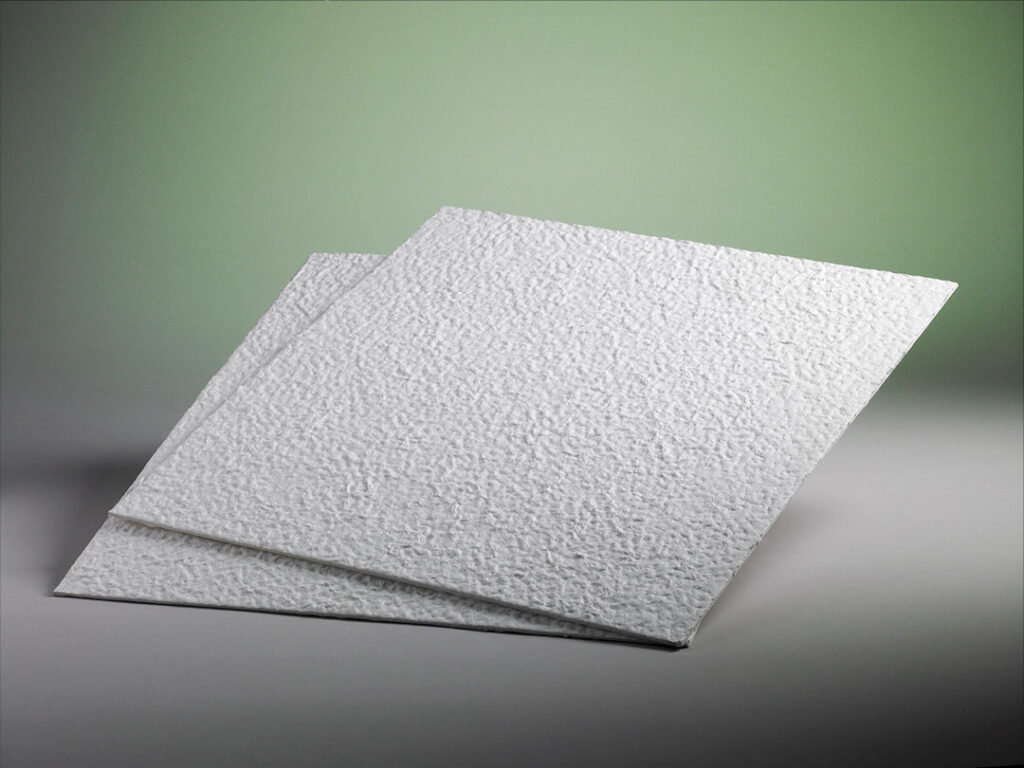MICROMEDIA®
Details
The addition of filter aids and wet strength resin differentiates MicroMedia® depth filter sheets from the AlphaMedia™ Series, but the differences do not end there.
The addition of these ingredients improves retention efficiency by increasing internal surface area and the positive charge known as zeta potential. Zeta potential is the positively charged site within the matrix of fibers and filter aids that attracts negatively charged particles that may be smaller than the pore sizes available in the filter pad.
Wet strength resins can be steam sterilized and are all free of formaldehyde. The filter aids used are perlite and/or diatomaceous earth, which also help to improve filtration efficiency.
MicroMedia® depth filter sheets are formulated with cellulose, wet strength resin and diatomaceous earth and/or perlite and are specifically designed for use in critical applications. All components of ErtelAlsop MicroMedia® depth filter sheets are listed in the CFR as generally recognized as safe for food contact in accordance with 21 CFR 176.170.

To reduce the occurrence of "false positives" due to 1,3-beta-D-glucans in cellulose, MicroMedia® L Series depth filters are manufactured from high purity cellulose.
MicroMedia® L Series filter sheets are specifically designed for use in applications where proteins are present, such as blood fractionation or products derived from recombinant DNA. These particular types of applications require special controls of pyrogens and extractables. Physical properties unique to these applications can lower the surface tension of the media and cause them to release extractables. This can cause problems with the LAL tests. These extractables can lead to "false positives" by reacting with a factor G in the LAL reagent and cellulose components.
One particular source of extractables is the 1,3-ß-D-glucan impurity in cellulose. Cellulose is a major component of depth filter products. The degree of reactivity depends on the amount of 1,3-ß-D-glucans released during the production of the filter medium and the amount of factor G in the LAL reagent, which varies depending on the manufacturer.
Using a unique process, ErtelAlsop minimizes the 1,3-ß-D-glucan content in the cellulose pulp prior to the production of the depth filter medium. This minimizes the effects of 1,3 ß-D-glucans and enables the validation of the product's LAL test.
MicroMedia® XL Series depth filter sheets are made from cellulose, wet strength resin and a special diatomaceous earth which is specially formulated for usage in critical applications.
MicroMedia® XL Series depth filter sheets offer improved turbidity reduction and higher throughput.
Download technical data sheetFor the highest possible quality assurance, ErtelAlsop's MicroMedia® LXL Series filter sheets are formulated from both high purity cellulose and high-quality diatomaceous earth.
Nine different grades of MicroMedia® LXL Series filter sheets offer the combined benefits of the ultra-pure diatomaceous earth of the XL-Series and the low beta-glucan cellulose fibers of the L-Series.
Download technical data sheetPXL Media is a complex of filter media that provides significantly improved throughput and excellent contaminant retention in high solids loading processes. PXL Media is specifically designed for use as an initial pre-filter or clarifier and is ideal for protecting downstream process steps.
Download technical data sheetPartners/Suppliers
We maintain intensive and personal contacts with our global partners and suppliers - synergies and reliability are very important to us. vipur's main partner is ErtelAlsop.
